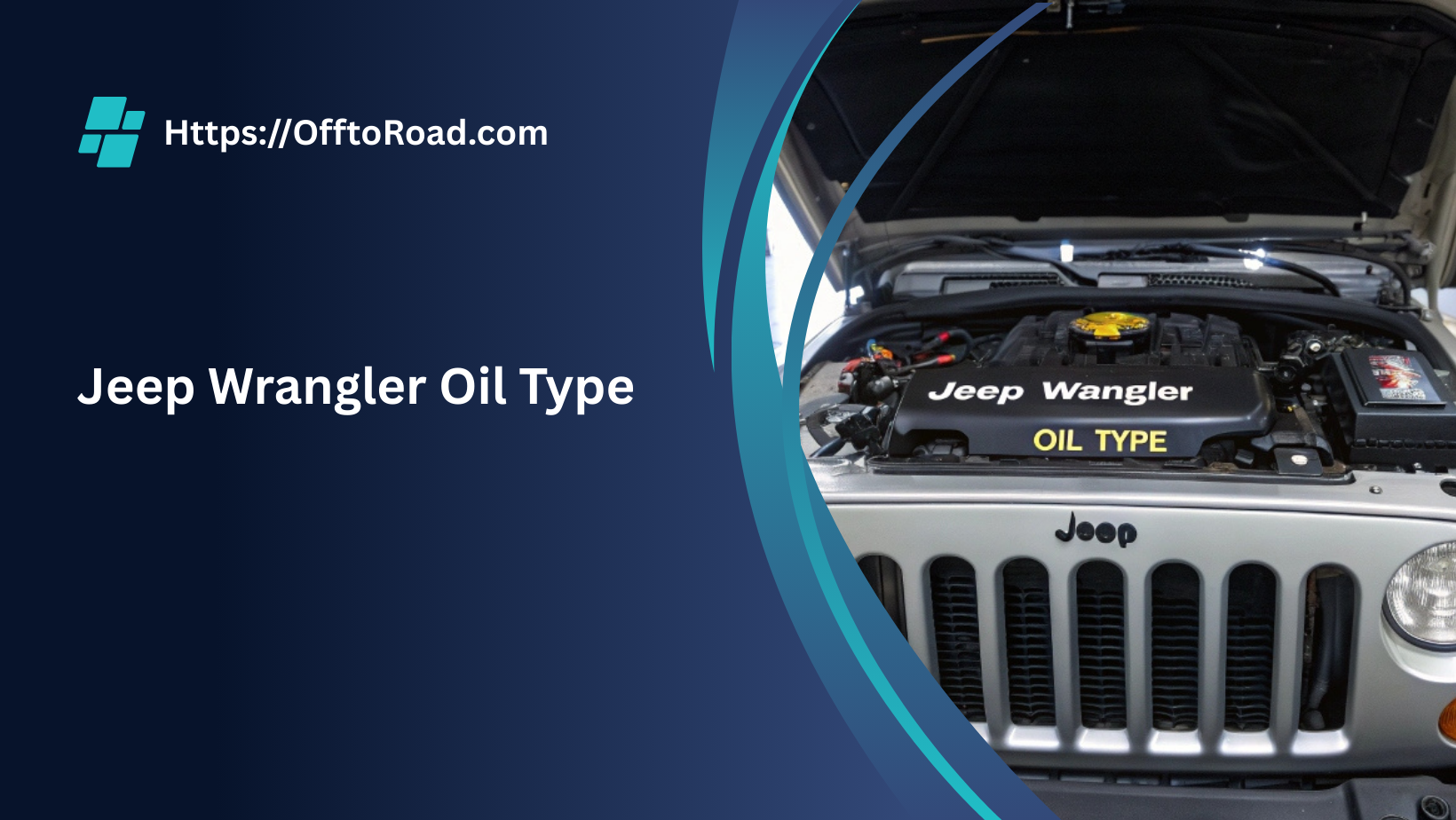The best oil type for a Jeep Wrangler is 5W-30 full synthetic oil, offering top protection in all conditions. It keeps the engine running smoothly whether on-road or off-road.
If you’ve got a Jeep Wrangler like I do, you know it’s not just a vehicle — it’s an adventure buddy. But to keep it running strong, you’ve got to take care of it, and one of the biggest things is making sure you’re using the right oil type. Don’t worry, though — I’ll make this easy to follow, so you’ll know exactly what your Wrangler needs.
Stay tuned with me — we’re about to dive into everything you need to know about Jeep Wrangler oil types, including why synthetic oil might be the best choice for your Jeep. You won’t want to miss these easy tips to keep your Wrangler running smooth and strong!
Why Does the Right Oil Type Matters?
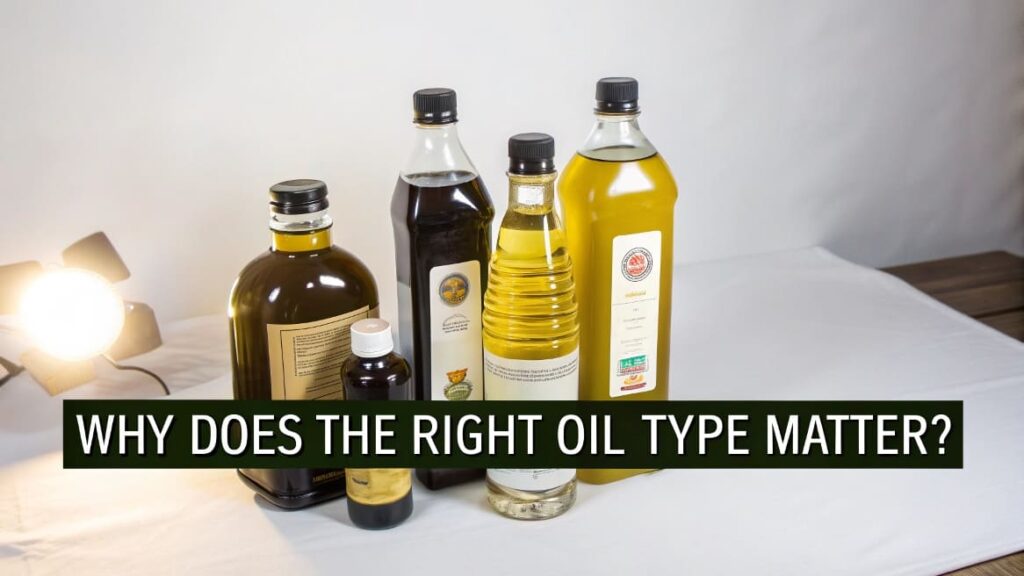
Here’s the thing: oil is like the lifeblood of your engine. The right oil keeps everything running smoothly, reduces wear, protects parts, and even helps with fuel efficiency. But, on the flip side, using the wrong oil can lead to poor performance, increased wear, and even engine damage over time. Trust me, you don’t want to skip out on this step.
Importance and Benefits of Oil:
When you’re thinking about keeping your Jeep Wrangler in top shape, choosing the right oil is one of the most important decisions you can make. Oil really is the lifeblood of your engine, and picking the right kind does more than just make your engine run smoothly—it can actually help it last longer too. Let me explain why oil is so crucial and how it helps your vehicle in different ways.
Engine Protection:
First and foremost, the right oil is key to protecting your engine. It acts as a barrier between moving parts, keeping them from rubbing against each other. This is especially important when your engine’s under pressure or in extreme weather. If you choose full synthetic oil, you’re getting top-notch protection because it keeps your engine parts clean and reduces friction. The result? A longer lifespan for your engine. That’s definitely a win!
Weather-Friendly:
One of the things I love about 5W-30 full synthetic oil is how versatile it is. Whether it’s freezing cold or sweltering hot outside, this oil works wonders. In cold weather, it stays fluid, so your engine starts up quickly, even on those chilly mornings. On the flip side, it helps protect your engine from the heat when temperatures rise, ensuring your engine doesn’t overheat or wear out too quickly. So, no matter the season, your engine’s well taken care of.
Smooth Performance:
Not only does the right oil protect your engine, but it also keeps everything running smoothly. Full synthetic oil makes sure that your engine stays efficient no matter how hard you push it. Whether you’re cruising on the highway or heading off-road, this oil helps maintain consistent performance, meaning you get the power and reliability you expect from your Jeep.
Less Maintenance Hassle:
Another great benefit of full synthetic oil is that it lets you go longer between oil changes. This means fewer visits to the mechanic, saving you both time and money. Plus, it’s one less thing to worry about when it comes to keeping your engine in great shape for the long haul.
What kind of oil does a 3.6 L V6 take?
If you drive a Jeep Wrangler with the 3.6L V6 engine, you’ll want to make sure you’re using the right oil to keep things running smoothly. In this case, the best option is 5W-30 full synthetic motor oil. Why? Well, this oil is specially designed to give your engine the protection it needs, reducing wear and tear and helping it perform at its best.
Also Read: https://offtoroad.com/how-much-to-paint-a-jeep-wrangler/
How Often Should I Change the Oil in My Jeep Wrangler?
Now, let’s talk about how often you should be changing your oil. Typically, with full synthetic oil, you can go between 7,500 to 10,000 miles before needing an oil change. But, here’s the thing – if you’re driving in harsh conditions like off-roading, towing, or just in really hot temperatures, you might want to change it a little more often. It’s always a good idea to keep an eye on your oil levels and quality for optimal performance.
What’s the Difference Between Conventional and Full Synthetic Oil for My Jeep?
You might be wondering, “Why not just use conventional oil?” Well, conventional oil can do the job, but full synthetic oil really takes things to the next level. It’s designed to offer superior protection, especially under tough conditions. It flows more easily, reduces friction in the engine, and can handle extreme temperatures much better. If you love off-roading or pushing your Jeep to its limits, synthetic oil is the way to go.
Can I Use Conventional Oil in My Jeep Wrangler?
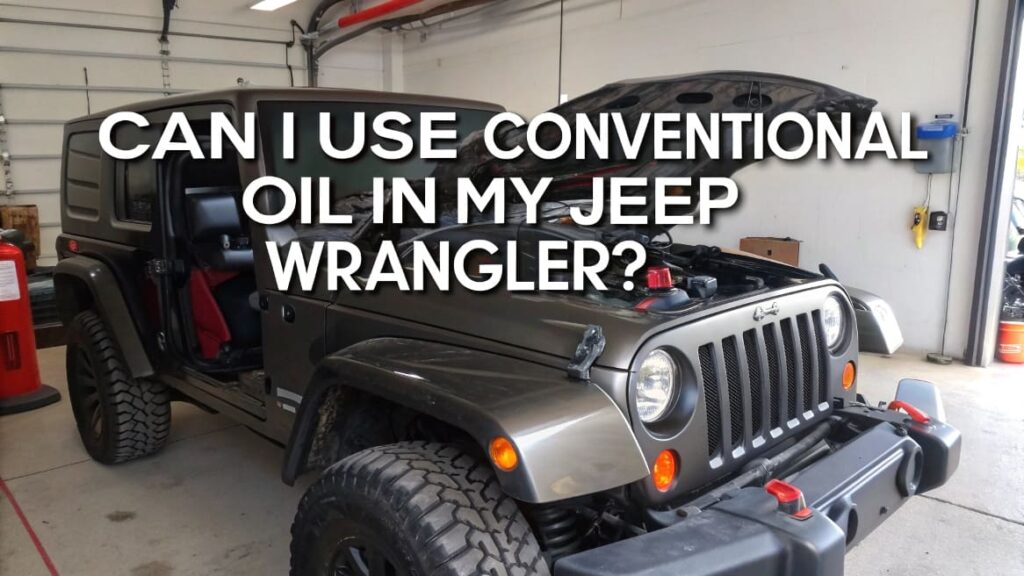
Sure, you can use conventional oil in your Jeep, but here’s the catch: full synthetic oil will give you better protection, especially for that 3.6L V6 engine. It’s a small investment for better engine performance and longevity. If you really care about your Jeep’s engine running in top condition, synthetic oil is the smarter choice.
Choosing the Right Oil: Why 5W-30 Full Synthetic Oil is Ideal for Your Jeep Wrangler:
If you own a Jeep Wrangler, you probably already know it’s a rugged, high-performance vehicle designed to handle tough terrains. To keep your Jeep’s engine running smoothly and efficiently, choosing the right oil is crucial. That’s where 5W-30 full synthetic oil comes in. Let me explain why this oil is the best option for your Jeep Wrangler.
Enhanced Performance and Protection:
First off, full synthetic oil offers superior performance. Unlike conventional oils, it maintains its viscosity at both high and low temperatures, providing exceptional protection for your engine. This is especially important for a vehicle like the Jeep Wrangler, which is often exposed to extreme conditions. So, you can trust that your engine is getting the protection it needs, even when you’re pushing it to the limit.
Great for Cold Weather:
Another key benefit of 5W-30 full synthetic oil is its ability to perform well in cold temperatures. Thanks to its low-temperature flow properties, it circulates easily through your engine on cold mornings. This means you don’t have to worry about your engine struggling to start when the weather drops, ensuring smoother performance right from the start.
Improved Fuel Economy:
You’ll also notice better fuel efficiency with 5W-30 full synthetic oil. Because it reduces friction within the engine, it helps the engine run more efficiently. This leads to better fuel economy, which is a nice bonus, especially if you do a lot of driving on and off-road.
Longer Engine Life:
On top of that, using full synthetic oil helps to extend the lifespan of your engine. By keeping engine parts well-lubricated and reducing wear and tear, you’re not only protecting your investment but also ensuring that your Jeep keeps running smoothly for years to come.
2021–2025 Jeep Wrangler (JL) (Current Generation):
Engine Options & Performance:
When it comes to engine options, the 2021 Jeep Wrangler has a solid range, depending on what you’re looking for in terms of power and efficiency. You can go with the 3.6L Pentastar V6, which gives you 285 horsepower and 260 lb-ft of torque. Or, if you’re after something a bit sportier, there’s the 2.0L Turbocharged I4 that delivers 270 horsepower and 295 lb-ft of torque.
If you want even more muscle, the 3.0L EcoDiesel V6 offers 260 horsepower and an impressive 442 lb-ft of torque. And for those who want to go full throttle, the 392 Rubicon with a 6.4L V8 offers a whopping 470 horsepower and 470 lb-ft of torque.
Fast forward to 2025, and Jeep keeps the same engine options but makes some exciting tweaks. The 3.6L V6 and 2.0L Turbocharged I4 are still available, and the 392 Rubicon continues to offer that V8 power, but there’s a special Rubicon 392 Final Edition for 2025, marking the end of that engine in this model.
Also Read: https://offtoroad.com/jeep-rubicon-gas-type/
Transmission & Drivetrain:
Moving on to the transmission and drivetrain, Jeep offers both manual and automatic options across the board. You’ll find a 6-speed manual transmission on the V6 models if you’re all about that hands-on driving experience.
On the other hand, the 8-speed automatic is available across most trims, which gives you smooth shifts for that relaxed ride. Whether you go for the Rock-Trac or Selec-Trac 4WD systems, you’ll be ready for whatever adventure comes your way.
Towing & Payload:
In terms of practicality, the 2021–2025 Wrangler offers some solid towing capacity. You can tow up to 3,500 lbs, depending on the configuration, which makes it more than capable for weekend trips or hauling gear. The payload capacity will vary depending on the trim and setup you choose, but it’s designed to handle the load for your adventures.
Technology & Features:
When it comes to tech, the 2021 Wrangler comes with Uconnect 4 featuring a 7″ or 8.4″ touchscreen, with Apple CarPlay and Android Auto for seamless connectivity. Plus, there are available safety features like adaptive cruise control, blind-spot monitoring, and rear cross-traffic alert.
For 2025, Jeep really steps it up with the Uconnect 5 system, which includes a massive 12.3″ touchscreen and wireless Apple CarPlay and Android Auto. On top of that, they’ve packed in over 85 standard and available safety features, making the Wrangler even smarter and safer for your drives.
Warranty & Pricing:
The warranty for these Wranglers is pretty standard: 3 years or 36,000 miles for basic coverage, and 5 years or 60,000 miles for the powertrain. As for pricing, the 2025 Wrangler starts at $33,990 for the Sport 2-Door, while the Rubicon 392 Final Edition can go up to around $92,000, depending on the configurations and additional features you choose.
Special Editions & Final Models:
Now, if you’re a Jeep enthusiast, you’ll definitely want to check out the special editions. The 2025 Willys ’41 Edition pays homage to the 1941 Willys MB with military-inspired olive paint, 33″ all-terrain tires, and Heritage cloth seats. And the Rubicon 392 Final Edition marks the last year for the powerful 6.4L HEMI V8 engine, making it a unique choice for those who love performance.
Notable Changes in 2025:
Looking at the 2025 model year, there are a few changes that stand out. For example, manual crank windows have been discontinued, which means you’ll now find electric windows across the board. On top of that, Jeep has introduced active cabin ventilation, so you can pre-ventilate your vehicle using a mobile app—how cool is that? Oh, and there’s also a new Olive ’41 Paint Color, inspired by Jeep’s military heritage, which adds a unique touch to the lineup.
2012–2018 Jeep Wrangler (JK):
If you’re considering the 2012–2018 Jeep Wrangler (JK), you’re looking at a rugged, go-anywhere vehicle that’s built for adventure. Over these years, Jeep kept the spirit of the Wrangler alive while making a few key updates. Let’s dive into what makes this generation special.

Engine Options & Performance:
When it comes to power, the 2012–2018 Wrangler (JK) has a reliable engine lineup. Starting with the 3.6L Pentastar V6, you get 285 horsepower and 260 lb-ft of torque, offering a nice mix of power for both daily drives and off-roading. Before 2012, the 3.8L V6 was the engine of choice, but Jeep upgraded it to the 3.6L for better performance and fuel efficiency.
Transmission & Drivetrain:
Now, as for the transmission options, the JK offered both a 6-speed manual and a 5-speed automatic—giving you the flexibility to choose how you want to drive. Whether you prefer the control of a manual or the ease of an automatic, both options are great for hitting the trails. The 4WD drivetrain was standard, meaning this Wrangler was always ready to take on challenging terrain, and the available Rock-Trac and Selec-Trac transfer cases made off-roading feel effortless.
Towing & Payload:
If you’re into hauling gear or going on a camping trip, the 2012–2018 Wrangler won’t disappoint. With a towing capacity of up to 3,500 lbs, you can easily bring along trailers, boats, or whatever gear you need. Plus, it’s designed with enough payload capacity to carry all your gear, so you won’t have to leave anything behind on your adventures.
Technology:
As for technology, the 2012–2018 Wrangler didn’t have all the fancy gadgets of newer models, but it still offered what you needed. The Uconnect system with Bluetooth, SiriusXM, and navigation made it easy to stay connected while on the road. In 2018, Jeep gave the Wrangler a little tech upgrade with a larger touchscreen and some new features, making it a bit more user-friendly.
Pricing & Warranty:
In terms of pricing, the 2012–2018 Wrangler started at around $23,000, though the price increased over the years as new features were added. Jeep also provided a standard 3-year/36,000-mile warranty with a 5-year/60,000-mile powertrain warranty—pretty standard for this type of vehicle, giving you peace of mind on and off the road.
Special Additions & Changes:
One thing Jeep did really well with the JK was offering a variety of special editions. Whether you wanted the rugged Rubicon for extreme off-roading or the more luxurious Sahara for city driving with style, there was a Wrangler for everyone. Plus, 2017-2018 brought some design tweaks—nothing too drastic, but enough to make the ride more comfortable without losing the classic Jeep vibe.
In the end, the 2012–2018 Jeep Wrangler (JK) remains a solid choice for anyone who wants a tough, reliable off-roading vehicle. It may not have all the bells and whistles of newer models, but it delivers on the adventure front. Whether you’re a weekend warrior or just need a dependable vehicle for everyday driving, the JK has got you covered.
Also Read: https://offtoroad.com/how-much-is-it-to-paint-a-jeep-wrangler/
Oil Type for 2006 Jeep Wrangler:
For your 2006 Jeep Wrangler, the recommended oil type is 5W-30 full synthetic oil. Full synthetic oil is a great choice for your Jeep because it provides better protection, especially if you’re planning on hitting the trails or facing tough weather conditions. It helps keep your engine running smoothly and reduces wear and tear, which is essential for an off-road vehicle like the Wrangler.
Oil Capacity:
When it comes to the oil capacity, your 2006 Jeep Wrangler requires about 6 quarts, including the oil filter. This is a standard amount for most Wranglers of that year, and it ensures your engine gets the proper amount of lubrication it needs to stay in good shape.
Why Full Synthetic?
You might wonder, “Why full synthetic?” Well, full synthetic oil is designed to flow better in cold temperatures and offers more protection against extreme heat, which is great for off-roading or long drives. It also helps your engine last longer, keeping it cleaner by reducing sludge buildup.
Pro Tip:
Make sure to check the oil level after every change, just to make sure it’s topped off properly. Running with the right oil level helps your engine stay healthy and efficient.
If you’re looking after your 2007 Jeep Wrangler, it’s important to know the right oil to use to keep your engine running at its best. Let’s take a closer look at what you’ll need.
Oil Type for 2007 Jeep Wrangler:
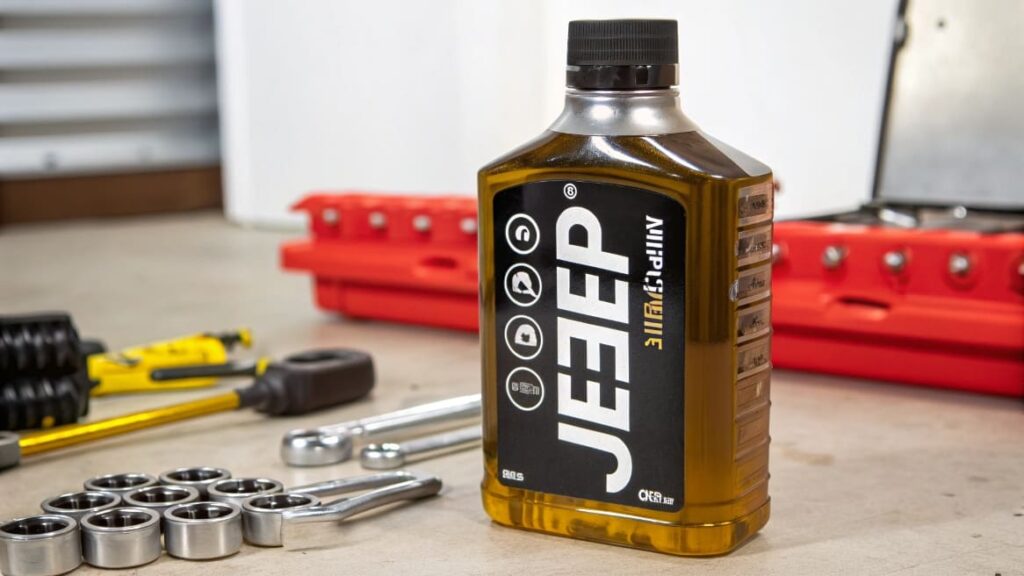
For the 2007 Jeep Wrangler, you’ll want to use 5W-30 full synthetic oil. Full synthetic oil is a great choice because it provides better protection for your engine, whether you’re driving through city streets or taking on tough off-road adventures. It’s designed to handle both high and low temperatures, making it ideal for all kinds of conditions.
Oil Capacity:
When you change the oil in your 2007 Jeep Wrangler, you’ll need around 6 quarts of oil, including the oil filter. This ensures your engine gets just the right amount of oil to keep everything running smoothly, which is key for maintaining optimal engine health.
Why Full Synthetic?
Now, you might be wondering, “Why full synthetic?” Well, full synthetic oil is engineered to flow more easily in cold weather, which helps your Jeep start smoothly. It also offers better protection at high temperatures, reducing wear and tear on your engine, especially if you’re tackling rough terrain.
Pro Tip:
A helpful tip—after an oil change, always double-check your oil level to make sure it’s just right. Running with the correct oil level helps prevent overheating and keeps your engine in good shape.
2008 Jeep Wrangler
For the 2008 Jeep Wrangler, the recommended oil is 5W-30 full synthetic oil. This is great for keeping your engine running smoothly, whether you’re cruising around the city or going off-road. Full synthetic oil is designed to protect your engine under a variety of conditions, especially when temperatures change. The oil capacity for this model is 6 quarts, including the oil filter, ensuring your engine stays properly lubricated.
2009 Jeep Wrangler
Moving on to the 2009 Jeep Wrangler, you’ll still use 5W-30 full synthetic oil—nothing changes here. Jeep has made sure that the oil specifications are consistent from the previous year, which makes it easier for you to maintain your vehicle. Like the 2008 model, the oil capacity remains at 6 quarts, including the filter. This is perfect for keeping your engine in good health, whether you’re driving on highways or tackling rougher terrains.
Also Read: https://offtoroad.com/are-jeep-wranglers-good-on-gas/
2010 Jeep Wrangler
For the 2010 Jeep Wrangler, the same oil type—5W-30 full synthetic oil—is recommended. This consistency is a bonus because it simplifies maintenance. Just like the other years, the oil capacity is 6 quarts, including the oil filter. By sticking to this oil type and capacity, Jeep ensures that your engine gets the right protection, helping it last longer and perform better on and off the road.
2011 Jeep Wrangler:
Finally, for the 2011 Jeep Wrangler, you’re still going with 5W-30 full synthetic oil. Jeep has kept the oil type consistent for these years to make sure that maintaining your vehicle is as easy as possible. And, just like the other models, the oil capacity is 6 quarts, including the filter. This consistency in oil type and capacity gives you peace of mind, knowing that your engine is well-protected.
Conventional, Synthetic Blend, or Full Synthetic?
IWhen it comes to choosing the right oil for your Jeep, you’ve got three main options: Conventional, Synthetic Blend, and Full Synthetic. Let’s break it down simply so you can choose the best one for your needs.
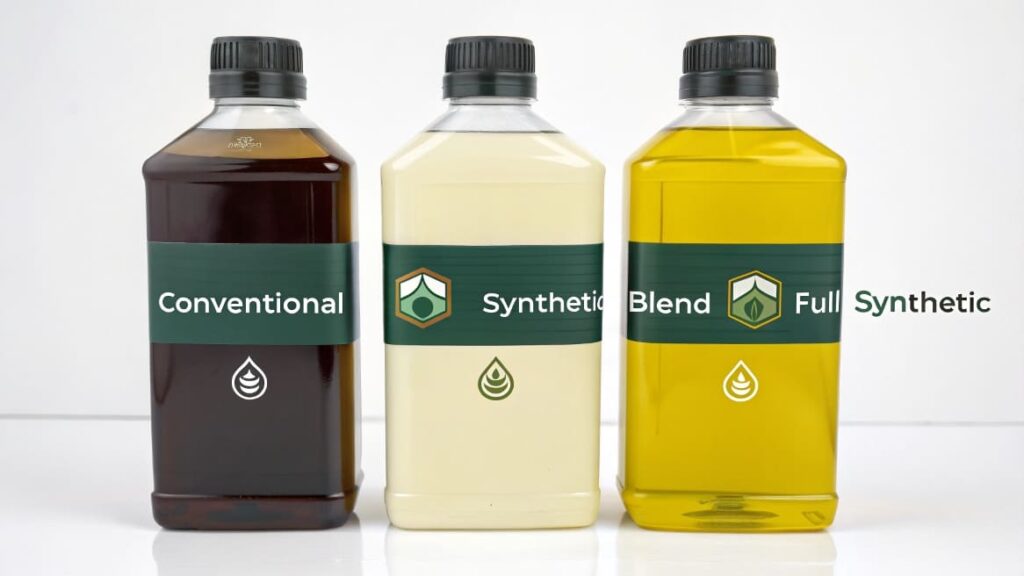
Conventional Oil:
If you’re on a budget or have an older Jeep, conventional oil is your go-to. It’s cost-effective and works fine for light driving. However, keep in mind that it needs to be changed more often (usually every 3,000–5,000 miles) and doesn’t handle extreme temperatures as well as the others.
Synthetic Blend Oil:
If you’re doing a bit of off-roading or towing, synthetic blend oil is a solid middle ground. It offers better protection than conventional oil, especially in higher temperatures, but without the price tag of full synthetic. It’s a great choice if you need more performance but don’t want to spend as much.
Full Synthetic Oil:
Now, if you really push your Jeep to the limit—like off-roading, towing, or driving in extreme weather—full synthetic oil is the best option. It offers the best protection and longer oil change intervals, usually between 7,500 and 10,000 miles. Yes, it’s more expensive, but it gives your engine top-notch protection.
How Often Should You Change the Oil?
Jeep recommends changing your oil every 7,500–10,000 miles if you’re using full synthetic. But here’s the thing — if you do a lot of off-roading or towing, it’s a good idea to change it every 5,000 miles. I tend to change mine around 5,000–6,000 miles because, well, I like keeping things fresh, especially after those rugged trail runs.
Best Oil Brands for Jeep Wrangler (What I Trust)?
Here’s a list of some trusted brands that I’ve used and seen other Jeepers recommend:
- Mopar (OEM Jeep oil) — Can’t go wrong with factory-approved stuff.
- Mobil 1 — A top choice, known for its high-quality synthetic oil.
- Pennzoil Platinum — Jeep partnered with them, and it’s a great option.
- Valvoline Advanced — Great for Wranglers with higher mileage.
- Royal Purple — Premium synthetic, fantastic if you’re doing a lot of heavy off-roading.
FAQ’s
1. What’s the recommended oil change interval for my Jeep Wrangler?
When it comes to oil changes, if you’re using full synthetic oil, Jeep recommends changing it every 7,500–10,000 miles. However, if you’re like me and love taking your Jeep off-road or towing heavy gear, it’s a good idea to change the oil a bit more often, around 5,000 miles, to keep your engine running smoothly.
2. Can I use synthetic blend oil in my Jeep Wrangler?
You absolutely can! If you’re doing some light off-roading or towing, synthetic blend oil is a great middle ground. It gives your engine better protection than conventional oil, especially in warmer conditions, without breaking the bank like full synthetic does. It’s a solid choice if you’re looking for something cost-effective but still protective.
3. How can I tell if I need to add oil between oil changes?
It’s always smart to check your oil level regularly, especially before hitting the trails. If the level is low, don’t wait until your next oil change—just top it off with the right oil type. Keeping the oil level where it should be helps prevent engine damage, especially on those long drives or off-road trips.
4. What’s the difference between conventional and full synthetic oil for my Jeep?
So here’s the scoop: Conventional oil is more affordable but doesn’t hold up as well under tough conditions. It needs more frequent changes and struggles with extreme heat or cold. On the other hand, full synthetic oil offers top-tier protection, especially if you’re pushing your Jeep to its limits. It lasts longer, so you won’t need to change it as often—plus, it handles those extreme temperatures and heavy-duty conditions like a champ.
5. Does the oil type really affect my Jeep’s performance?
Absolutely! The type of oil you use can make a big difference in your Jeep’s performance. Using the right oil, like 5W-30 full synthetic, helps your engine run more efficiently, reduces wear, and ensures you get better protection, whether you’re on the highway or hitting the trails. Stick to the recommended oil, and your engine will thank you in the long run.
Conclusion
To wrap things up, taking care of your Jeep Wrangler’s engine is as easy as choosing the right oil. By sticking with 5W-30 full synthetic oil, you’ll ensure your engine stays protected, whether you’re cruising down highways or tackling tough trails. So, make it a habit to change your oil every 7,500–10,000 miles, and your Jeep will thank you for many adventures to come!
